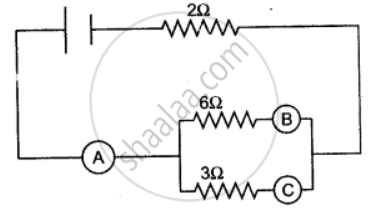Advertisements
Advertisements
प्रश्न
Keeping the resistance constant, the potential difference applied across the ends of a component is halved. By how much does the current change?
उत्तर
From Ohm's law we have:
V / I = R
Or I = V/R
Now, according to the question, the resistance is constant and the potential difference is halved.
i.e. R' = R
and V' = V/2
Then the new current is given by:
I' = V'/R'
= V/2/R
= (1/2) (V/R)
= (1/2) I
It is clear from the above statement that the current becomes half.
APPEARS IN
संबंधित प्रश्न
What is meant by saying that the potential difference between two points is 1 V?
You have three resistors of values 2Ω, 3Ω and 5Ω. How will you join them so that the total resistance is more than 7Ω?
1) Draw a diagram for the arrangement
2) Calculate the equivalent resistance.
How much energy is transferred by a 12 V Power supply to each coulomb of charge which it moves around a circuit?
A resistance of 20 ohms has a current of 2 amperes flowing in it. What potential difference is there between its ends?
What is Ohm's law? Explain how it is used to define the unit of resistance.
Three electric cells of potential difference 1.5 V each have been connected as a battery. The potential differences of the battery will be ____________ V.
In the figure given below, A, B and C are three ammeters. The ammeter B reads 0.5A. (All the ammeters have negligible resistance.)

Calculate:
(i) the readings in the ammeters A and C.
(ii) the total resistance of the circuit.
Two bulbs are marked 100 W, 220 V and 60 W, 110 V. Calculate the ratio of their resistances.
A battery of 10 volt carries 20,000 C of charge through a resistance of 20 Ω. The work done in 10 seconds is:
Inside a hollow charged spherical conductor, the potential ______
